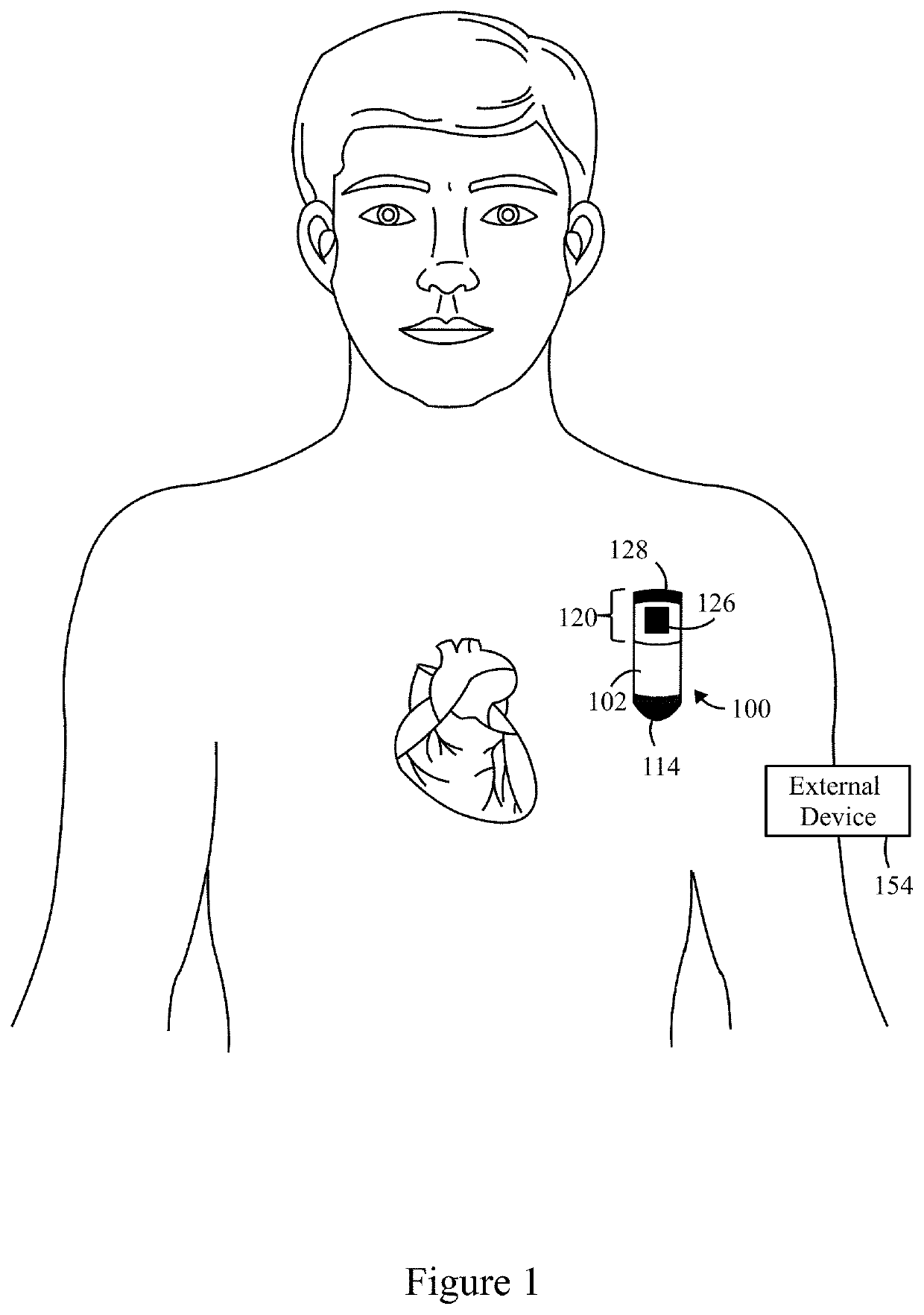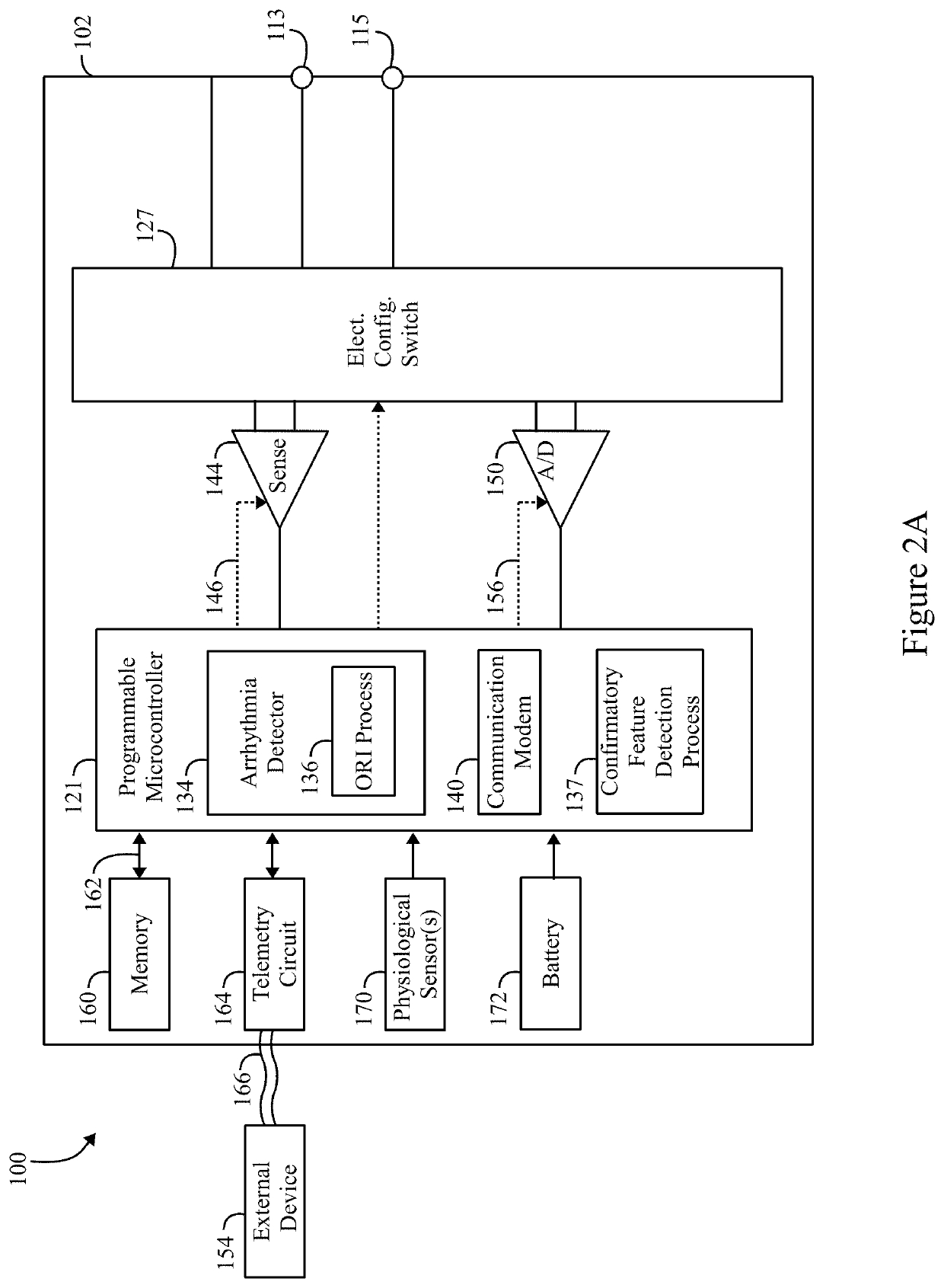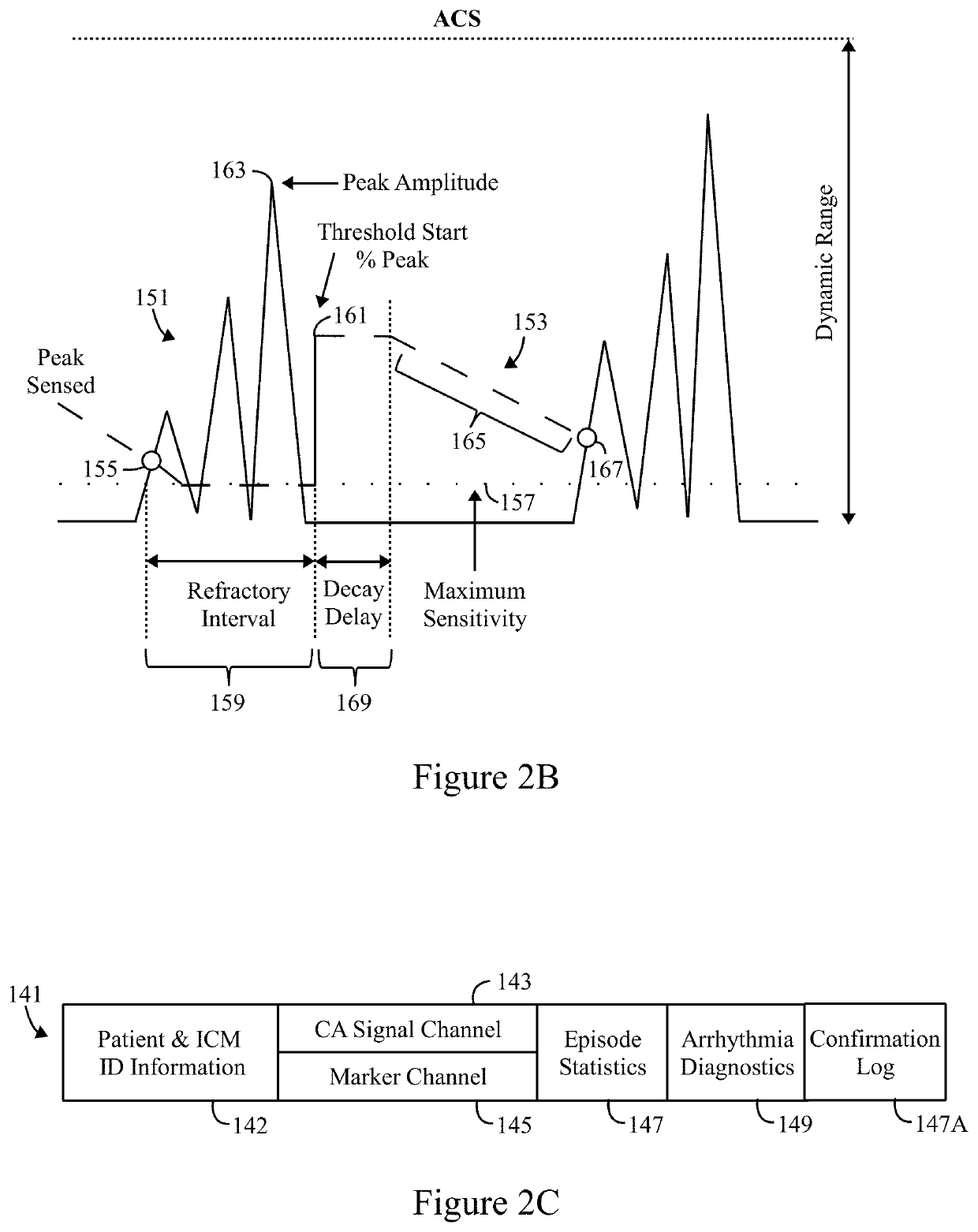Method and system to detect R-waves in cardiac arrhythmic patterns
a technology of arrhythmic patterns and detection methods, applied in the field of implantable medical devices, can solve the problems of undue false positive detection limited impulsive propagation through av nodes, undue false positives of existing af detection algorithms, etc., and achieve the effect of suppressing nois
- Summary
- Abstract
- Description
- Claims
- Application Information
AI Technical Summary
Benefits of technology
Problems solved by technology
Method used
Image
Examples
Embodiment Construction
[0057]I. TERMS AND ABBREVIATIONS[0058]II. OVERVIEW—1ST & 2ND PASS AF DETECTION / CONFIRMATION SYSTEM & PROCESS[0059]III. ALTERNATIVE EMBODIMENT—IMPROVED R-WAVE DETECTION ALGORITHM—BRADYCARDIA AND ASYSTOLE EPISODES USING A SECOND PASS DETECTION WORKFLOW[0060]IV. ALTERNATIVE EMBODIMENT—R-WAVE DETECTION USING SELF-ADJUSTING PARAMETERS AND PHYSIOLOGIC DISCRIMINATORS (1ST & 2ND PASS)[0061]V. ALTERNATIVE EMBODIMENT—FULLY ADAPTIVE R-WAVE DETECTION / CORRECTION ALGORITHM (1ST & 2ND PASS)[0062]VI. ALTERNATIVE EMBODIMENT—NOISE DETECTION ALGORITHM FOR CA SIGNALS SENSED BY IMPLANTABLE CARDIAC MONITOR (1ST & 2ND PASS)
I. Terms and Abbreviations
[0063]The terms “cardiac activity signal”, “cardiac activity signals”, “CA signal” and “CA signals” (collectively “CA signals”) are used interchangeably throughout to refer to an analog or digital electrical signal recorded by two or more electrodes positioned subcutaneous or cutaneous, where the electrical signals are indicative of cardiac electrical activity....
PUM
 Login to View More
Login to View More Abstract
Description
Claims
Application Information
 Login to View More
Login to View More - R&D
- Intellectual Property
- Life Sciences
- Materials
- Tech Scout
- Unparalleled Data Quality
- Higher Quality Content
- 60% Fewer Hallucinations
Browse by: Latest US Patents, China's latest patents, Technical Efficacy Thesaurus, Application Domain, Technology Topic, Popular Technical Reports.
© 2025 PatSnap. All rights reserved.Legal|Privacy policy|Modern Slavery Act Transparency Statement|Sitemap|About US| Contact US: help@patsnap.com



